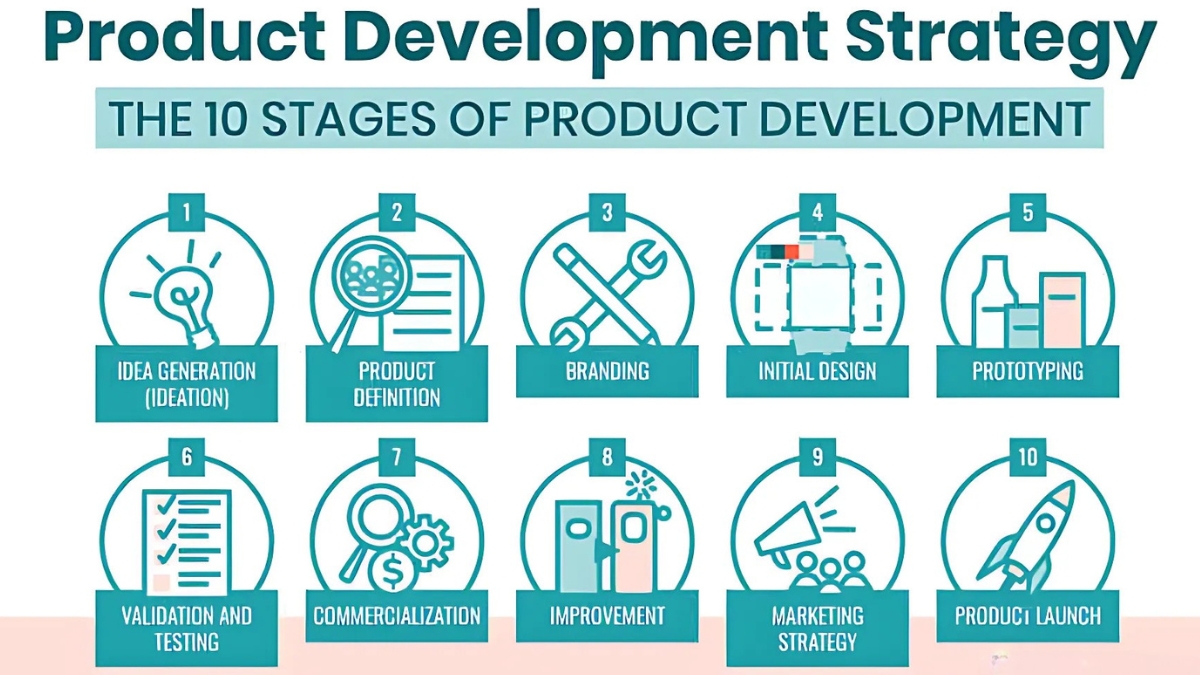
How to Develop a Profitable Niche Product in 2025: Ultimate Guide
Did you know that 42% of small businesses fail due to poor market fit? Yet, niche products consistently outperform general market offerings, with some achieving profit margins up to 70%! I’ll show you how to tap into this potential by developing your own successful niche product.
Identifying Your Niche Market
The real magic happens when you start digging into market gaps like a detective. I remember spending weeks hunched over my laptop, scrolling through Reddit threads and Google Trends, trying to understand what customers were desperately seeking but couldn’t find. My coffee consumption hit ridiculous levels during those research marathons.
One of my biggest revelations? People don’t just want products; they want solutions to specific problems. When I began to develop a niche product, I realized it wasn’t about creating something cool – it was about addressing a pain point that larger competitors were completely missing.
Take my first successful venture, for example. I noticed a tiny community of urban gardeners struggling with compact growing solutions for tiny apartment balconies. Most gardening products were designed for massive backyards, but these folks needed something totally different. By studying their conversations and challenges, I identified a massive untapped market.
Pro tip: Reddit is a goldmine for niche research. Those passionate community threads? They’re basically treasure maps pointing directly to unmet needs. I’d spend hours reading through discussions, highlighting common frustrations and wish lists that mainstream brands weren’t addressing.
Google Trends became my best friend during this process. It helped me validate whether my niche market had actual search volume and growing interest. Pro tip: look for emerging trends with consistent upward trajectories, not just temporary spikes.

Market size matters, but don’t get hung up on huge numbers. Sometimes, a smaller, more passionate audience can be way more profitable than a massive, generic market. I’d rather serve 1,000 super-fans than compete with millions of lukewarm consumers.
When evaluating potential niches, I developed a simple checklist:
- Can I solve a specific problem?
- Is there passionate community interest?
- Are existing solutions underwhelming?
- Can I create something unique?
My biggest mistake early on? Trying to please everyone. Successful niche products aren’t about broad appeal – they’re about deep, meaningful solutions for a specific group.
Remember, identifying your niche isn’t a one-time thing. Markets evolve, customer needs shift, and what works today might not work tomorrow. Stay curious, keep listening, and be ready to pivot.
Want to know a secret? The most successful niche products often come from the founder’s own frustrations. Your personal pain point might just be the key to unlocking an incredible business opportunity.
Market Research and Validation
When I first started exploring entrepreneurship, market research felt like navigating a maze blindfolded. Developing a niche product isn’t just about having a cool idea – it’s about understanding exactly who needs your solution and why.
Customer interviews became my secret weapon. I learned to ask probing questions that went beyond surface-level responses. Instead of generic “Would you buy this?” queries, I’d dig into specific pain points. One conversation with a potential customer revealed more insights than weeks of solo brainstorming.
Creating buyer personas transformed my approach. These weren’t just demographic charts – they were living, breathing representations of my ideal customer. I’d give them names, backstories, and real challenges. My persona for the urban gardening product, “Sarah,” wasn’t just a 30-something professional – she was someone struggling to grow herbs in a 500-square-foot apartment with limited sunlight.
Search intent analysis became crucial when I decided to develop a niche product. Tools like Google Keyword Planner showed me exactly what potential customers were searching for. Those long-tail keywords? They’re like secret maps to unmet market needs.

Pre-launch campaigns became my validation playground. I’d create landing pages, run targeted social media ads, and track every single interaction. Not just clicks, but engagement depth. A 2% conversion rate might sound low, but in a targeted niche, that could mean serious potential.
Pro tips I wish someone had told me earlier:
- Don’t trust your gut alone
- Quantify everything you can
- Be willing to pivot based on real data
- Talk to actual potential customers constantly
My biggest market research mistake? Assuming I knew what customers wanted without talking to them. Spoiler alert: I was spectacularly wrong most of the time.
Remember, successful market research isn’t about being perfect. It’s about being curious, adaptable, and willing to learn from every single interaction.
Product Development Strategy
Developing a niche product is like building a custom puzzle where you’re designing both the pieces and the final picture. My first MVP was embarrassingly basic – a prototype so rough it looked like a middle school science project. But that’s the point.
Minimum viable products are about stripping everything down to core functionality. When I decided to develop a niche product for urban gardeners, my initial prototype was literally a compact modular planter with basic water retention technology. No bells, zero whistles.
Beta testing revealed everything. I recruited 20 passionate urban gardening enthusiasts who weren’t afraid to give brutally honest feedback. Their insights transformed my basic concept into something genuinely useful. One tester suggested a self-watering mechanism that became a game-changer.
Pricing strategy isn’t just about covering costs – it’s about perceived value. I priced my product slightly premium to signal quality, but not so high that it became inaccessible. Market research showed my target audience valued innovation over cheap alternatives.

Key development strategies:
- Start extremely minimal
- Prioritize core problem-solving
- Listen obsessively to user feedback
- Be ready to pivot quickly
- Don’t over-engineer initial versions
Pro tip: Your first product will never be perfect. Embrace imperfection as a pathway to improvement. Each iteration gets you closer to solving real customer problems.
Profit margins matter, but solving a genuine need matters more. My urban gardening product wasn’t about making millions – it was about helping people reconnect with growing their own food, even in tiny spaces.
Remember, successful product development is 10% brilliant idea and 90% relentless iteration.
Launch and Marketing Plan
Developing a niche product is only half the battle – getting it in front of the right audience is where the real magic happens. My first launch felt like shouting into the void until I discovered targeted marketing strategies.
Content marketing became my secret weapon. I created in-depth blog posts, tutorial videos, and social media content that spoke directly to my urban gardening community’s specific challenges. Each piece wasn’t just promotion – it was genuine value.
Building an email list was crucial. I offered a free urban gardening starter guide that attracted passionate subscribers who were genuinely interested in my solution. These weren’t just random contacts – they were potential brand advocates.
When I decided to develop a niche product, I knew traditional marketing wouldn’t cut it. I focused on micro-influencers in the urban gardening space who had genuine, engaged audiences. One partnership with a popular Instagram gardener generated more traction than months of paid advertising.

Marketing strategy essentials:
- Target hyper-specific audience segments
- Create valuable, educational content
- Build genuine community connections
- Leverage micro-influencer partnerships
- Track and adapt constantly
Social media wasn’t about follower count – it was about creating a community. I shared real user stories, gardening tips, and behind-the-scenes product development moments that made people feel connected to the brand.
Promotional campaigns worked best when they felt authentic. Giveaways, user-generated content contests, and exclusive early-access programs made my audience feel like insiders.
Remember: successful marketing is about building relationships, not just selling products.
Unlock the full potential of digital marketing with SEO and Social Media Marketing EBook Sets! These guides provide expert strategies to improve search engine rankings, drive organic traffic, and create impactful social media campaigns. Learn how to optimize your content, engage your audience, and turn followers into loyal customers. Perfect for businesses, entrepreneurs, and marketers looking to dominate online. Start your digital marketing journey today!
Scaling and Optimization
Developing a niche product isn’t a one-time event – it’s an ongoing journey of growth and adaptation. My urban gardening venture taught me that scaling requires constant refinement and strategic thinking.
Customer feedback systems became my north star. I implemented multiple touchpoints – post-purchase surveys, quarterly user interviews, and an ongoing community forum. Each piece of feedback was a potential goldmine for improvement.
When I decided to develop a niche product further, I realized optimization wasn’t just about the product – it was about the entire ecosystem. Production processes needed constant streamlining. I invested in small-batch manufacturing that could quickly adapt to user needs.

Marketing channel expansion was critical. What worked initially didn’t guarantee future success. I diversified across platforms, creating targeted content for Instagram, YouTube tutorials, and niche gardening forums.
Scaling strategies that worked:
- Automate repetitive processes
- Invest in customer feedback loops
- Remain flexible in product development
- Track key performance metrics
- Build scalable infrastructure
Product line extensions came from deep market understanding. Our initial compact planter led to modular growing systems, specialized soil mixes, and online gardening workshops. Each extension solved a specific customer problem.
The most successful businesses aren’t just selling products – they’re creating ecosystems that solve real-world challenges.
Developing a successful niche product requires careful research, planning, and execution. Start with thorough market research, validate your concept, and continuously refine based on customer feedback. Ready to create your niche product? Begin with market research today!





